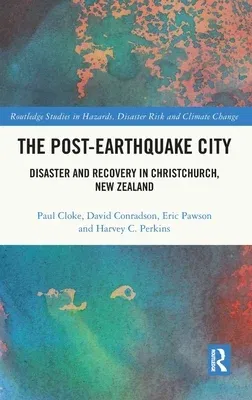Paul Cloke
(Author)The Post-Earthquake City: Disaster and Recovery in Christchurch, New ZealandHardcover, 15 February 2023

Qty
1
Turbo
Ships in 2 - 3 days
In Stock
Free Delivery
Cash on Delivery
15 Days
Free Returns
Secure Checkout

Part of Series
Routledge Studies in Hazards, Disaster Risk and Climate Chan
Print Length
262 pages
Language
English
Publisher
Routledge
Date Published
15 Feb 2023
ISBN-10
0367225522
ISBN-13
9780367225520
Description
Product Details
Book Format:
Hardcover
Country of Origin:
US
Date Published:
15 February 2023
Dimensions:
23.39 x
15.6 x
1.75 cm
ISBN-10:
0367225522
ISBN-13:
9780367225520
Language:
English
Location:
Oxford
Pages:
262
Publisher:
Weight:
566.99 gm